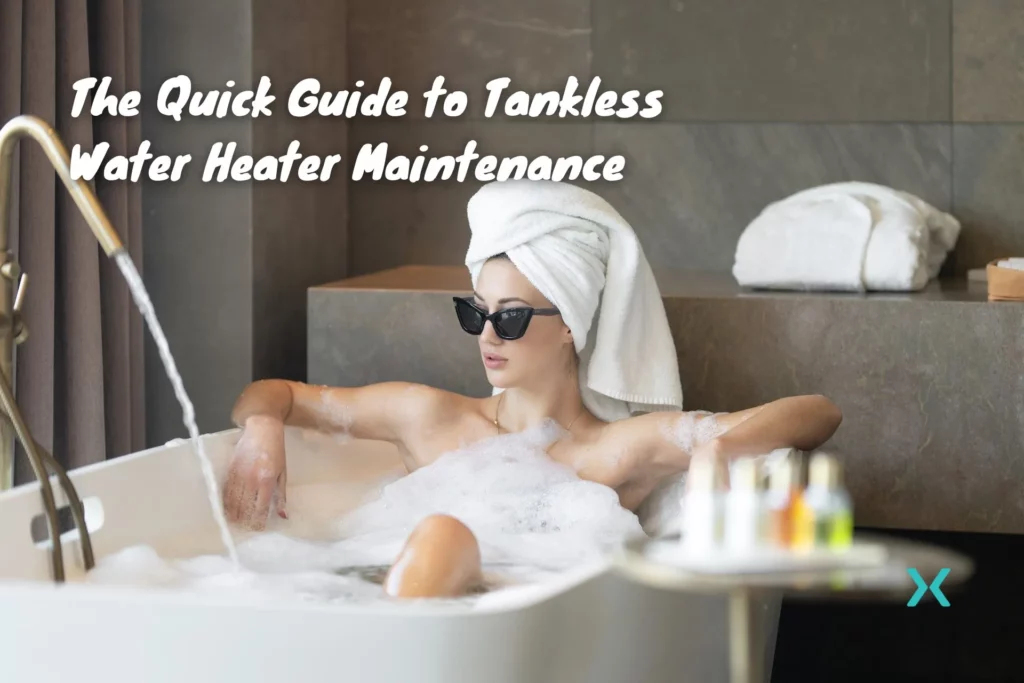The Phyxter Blog is reader-supported. Purchases made through links may earn a commission (at no cost to you). Learn More.
⭐ Your Guide to Tankless Water Heater Maintenance
Tankless water heaters are best known for providing an endless hot water supply in your home, but not if you ignore maintenance. Keeping your tankless hot water heater in good working order is essential to keep the flow of hot water for those awesome showers you love so much, especially in winter.
Routine maintenance is a must to keep your home appliances in great shape.
For example, tankless water heaters with the proper maintenance schedule can keep producing hot water for up to twenty years or more. There are a few key things homeowners can do without the help of a water heater professional.
Hopefully, we can help you ensure your tankless heater stays repair-free with the following cleaning process.
Table of Contents
⭐ Benefits of Properly Maintaining your Tankless Hot Water Heater
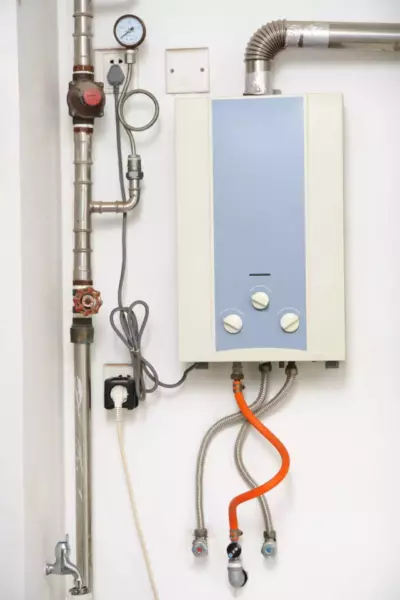
With the right maintenance plan, you can expect the following from your tankless hot water heater:
🛠️ Long Lifespan:
A tankless water heater, based on its construction and not having a tank, can expect to last 20 years or more.
This is compared to 10 to 12 years for a hot water heater with a storage tank.
Simple maintenance can help prolong the life of your heater.
🛠️ Optimal Performance:
Like your other appliances, maintaining your tankless water heater to a high standard ensures that your heater keeps pumping out hot water while maintaining a high flow rate without increasing your gas bill.
🛠️ Reducing the Risk of Premature Failure:
Calcified deposits like those caused by calcium and magnesium can cause irreparable damage to your heater.
Without a proper maintenance plan, these deposits can build up and damage the heat exchanger, which may require an expensive replacement.
How often you flush out your water system is highly dependent on the water hardness of your area.
In addition, a manufacturer’s warranty may not cover any damage caused due to a lack of maintenance.
Hence why it’s in your best interest to maintain it correctly.
Fitting a water softener into your home can help reduce problems caused by hard water.
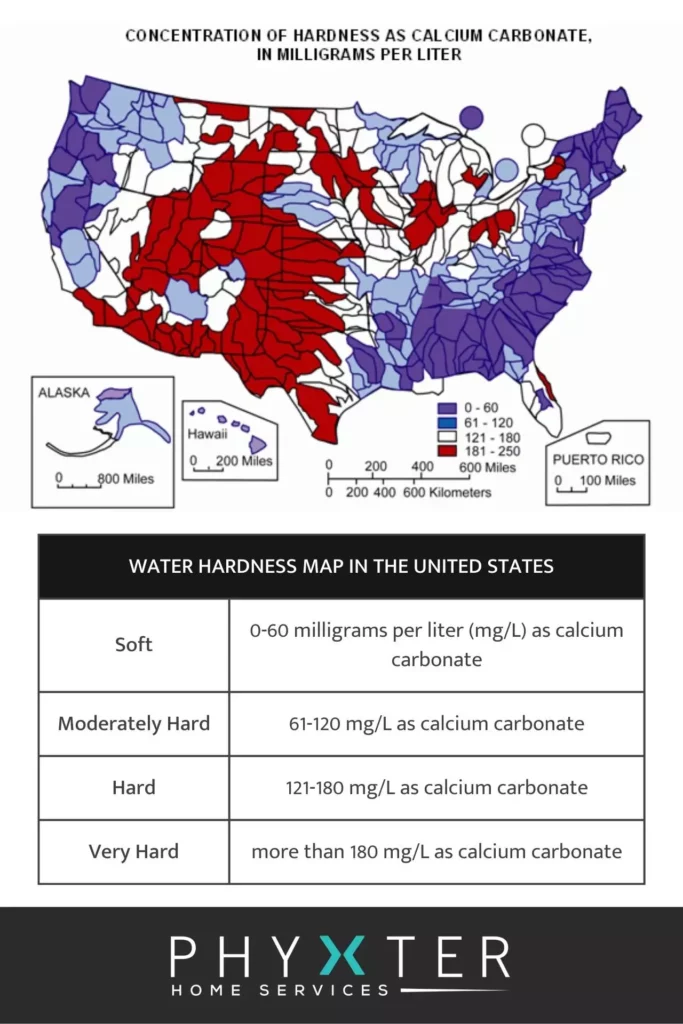
⭐ Tankless Water Heater Maintenance Checklist
🧰 Cleaning the Air Filter
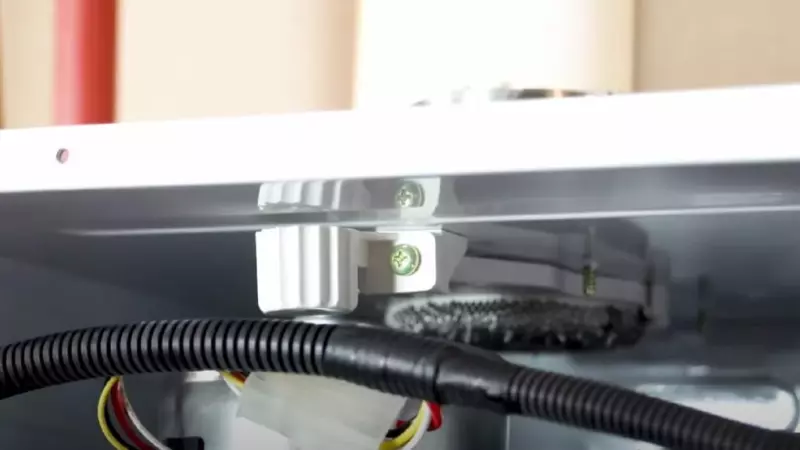
Your tankless water heater needs a fresh supply of air to function correctly.
So they are fitted with an air filter just like your AC.
All tankless units are designed differently.
Also, your filter may not be in the same spot as other heaters. Identify the air inlet pipe, and you will find the filter nearby.
This basic screen air filter can be rinsed with soapy water. Make sure it’s dry before reinstalling.
🧰 Cleaning the Water Filter
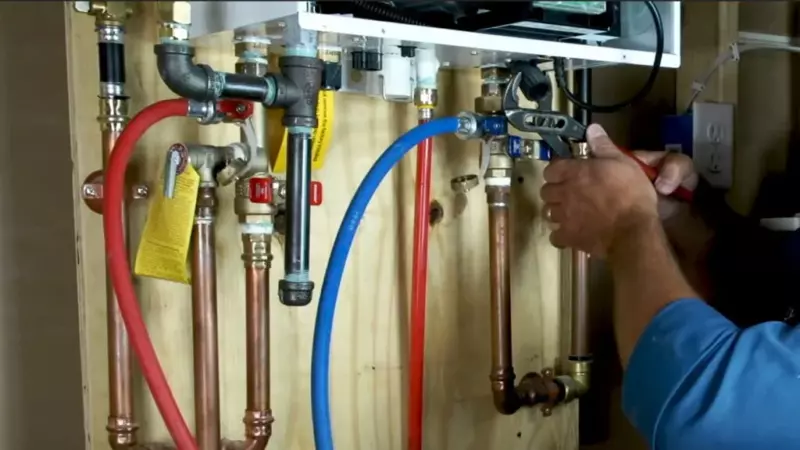
Nearly all tankless water heaters are fitted with a water filter.
This traps any larger sediment coming from your water supply. If this builds up, it can significantly restrict the function of your heater.
All you need to do is locate your filter (it will be near the inlet cold water side) and remove it.
Usually, it will just need to rinse under water to clean out any sediment.
✅ PRO TIP: Most tankless water heaters are built slightly differently. If you can’t identify what we are talking about, refer to the user manual.
🧰 Cleaning Out the Dirt Trap
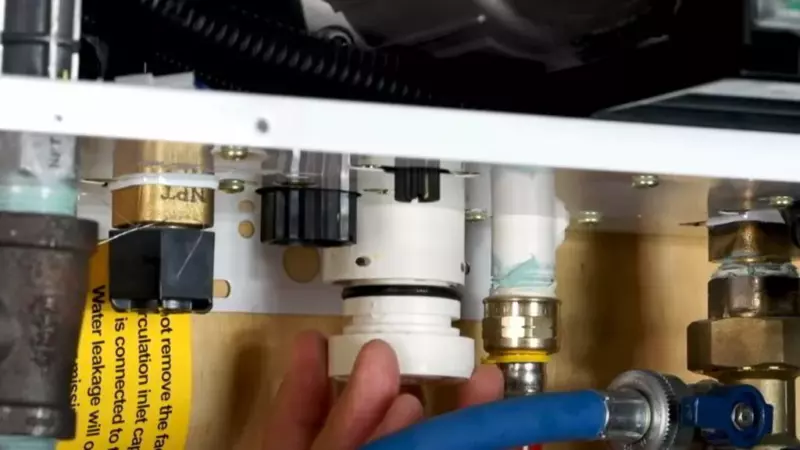
Use the same process as per the water filter.
This is located underneath the tankless water heater with the other connections.
Remove the trap and clean it out.
This does not contain a filter and is just a trap for gunk and other stuff in your heater.
Before replacing, ensure you correctly seat the O-ring fitted to the trap.
🧰 Flushing Your Hot Water System
Your should have your tankless water heater flushed at least once a year.
Maybe more if you live in an area with hard water.
During regular use, mineral deposits and sediment collect inside the water heater.
These types of buildups can damage the heating elements (aka heat exchanger).
This typically means that the unit’s energy efficiency will drop, and you will pay more through your utility bill.
🧰 How To Flush Your Tankless Water Heater
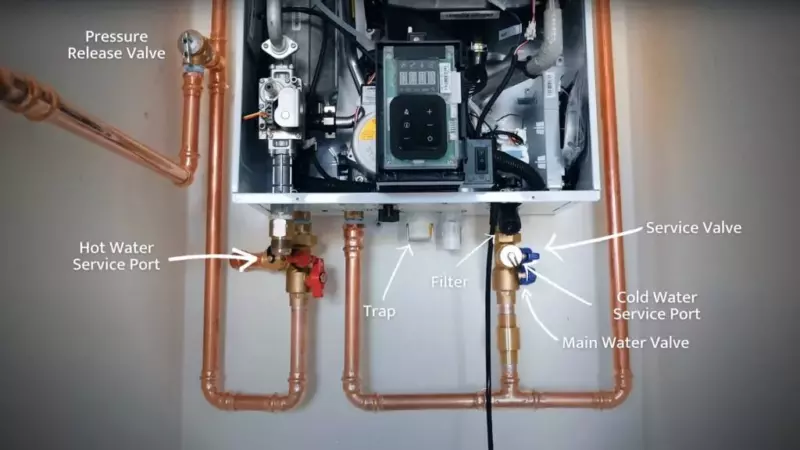
How To Flush Your Tankless Water Heater
✔️ Safety First!
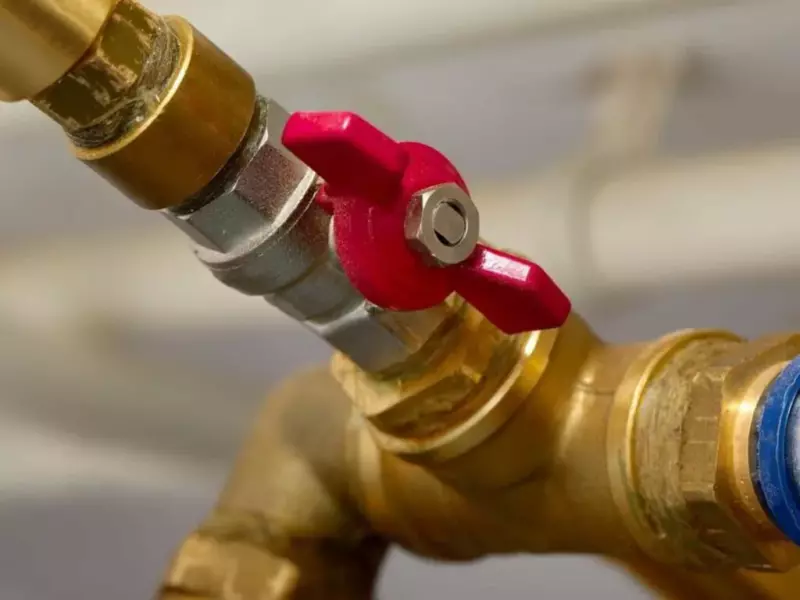
Turn off the gas to your tankless water heater, or if it’s electric, flick the circuit breaker to the off position.
✔️ Remove the cover or access panel
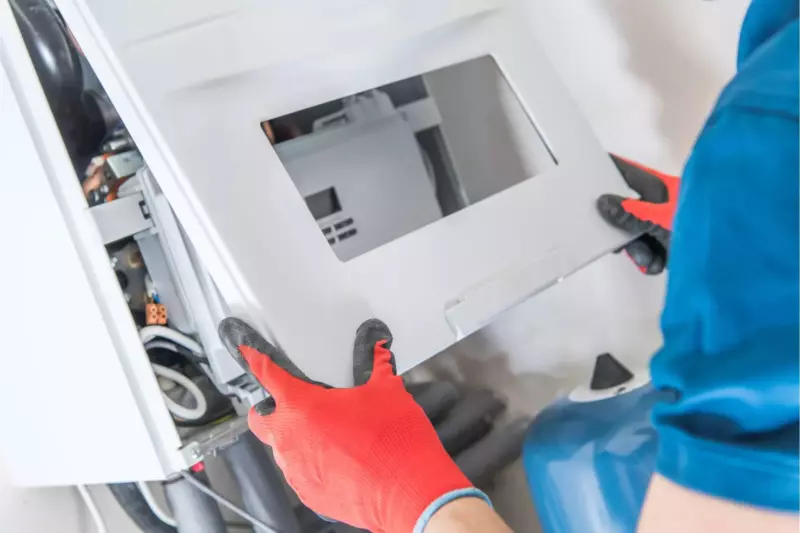
This is pretty simple as they are usually only held on with a few screws or tabs.
✔️ Turn off the water supply
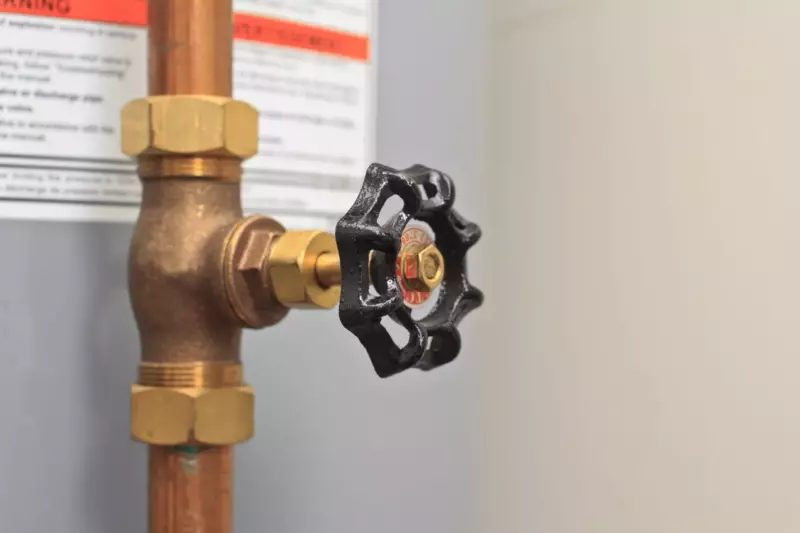
Turn off the water supply to your home and release the pressure from the system via the pressure release valves.
Then, double-check it by operating one of your hot water taps in your home.
✔️ Connect Your Inlet Hose
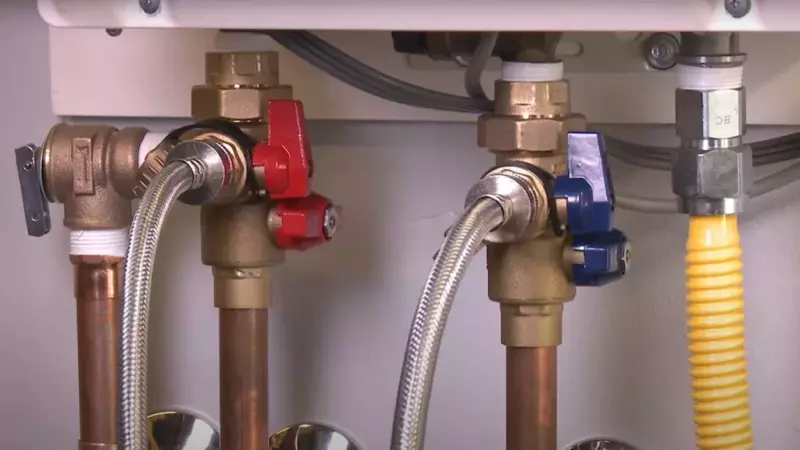
Connect one of your hose sections to the inlet side of the tankless water heater.
This is where the cold water enters the system.
A service port should be installed on the inlet and outside pipes for you to connect to.
If there isn’t, just remove the cold water hose or pipe from the unit and connect yours.
✔️ Connect Your Submersible Pump
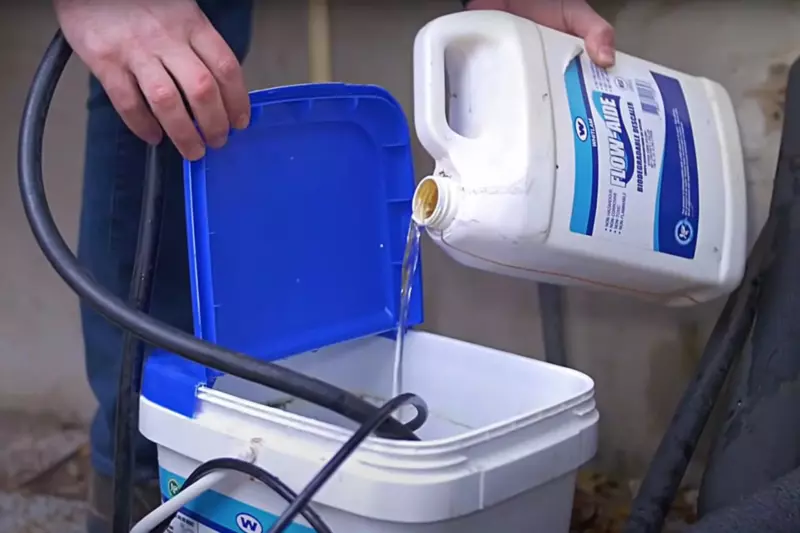
Connect your sump pump to the other end of the hose and submerse it in the bucket you prepared with the mixture of water and vinegar.
Make sure your pump is plugged in.
✔️ Connect Your Outlet Hose

Connect your other hose to your tankless heater’s hot water hose outlet and run it back into the bucket.
The plan is to create a closed-loop system to clean out your water heater and not contaminate the whole system in your home.
✔️ Check!
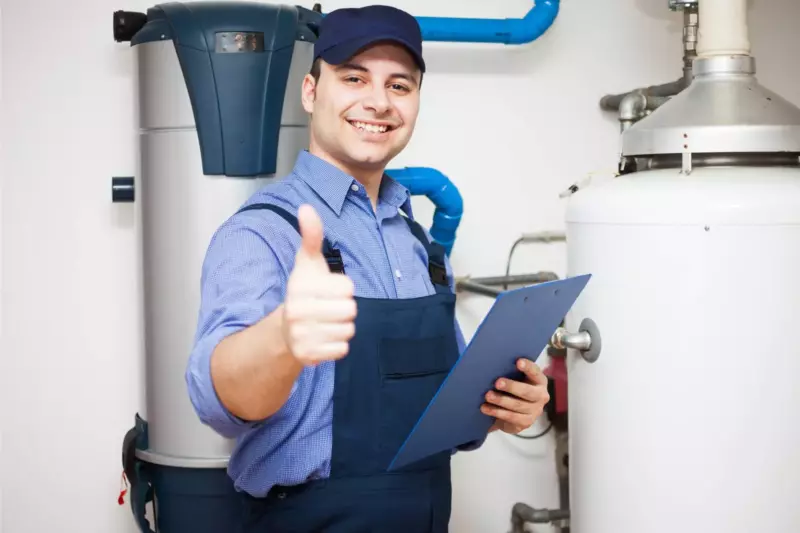
Make sure any other isolation valves within the closed-loop system are open.
✔️ Switch On Your Pump
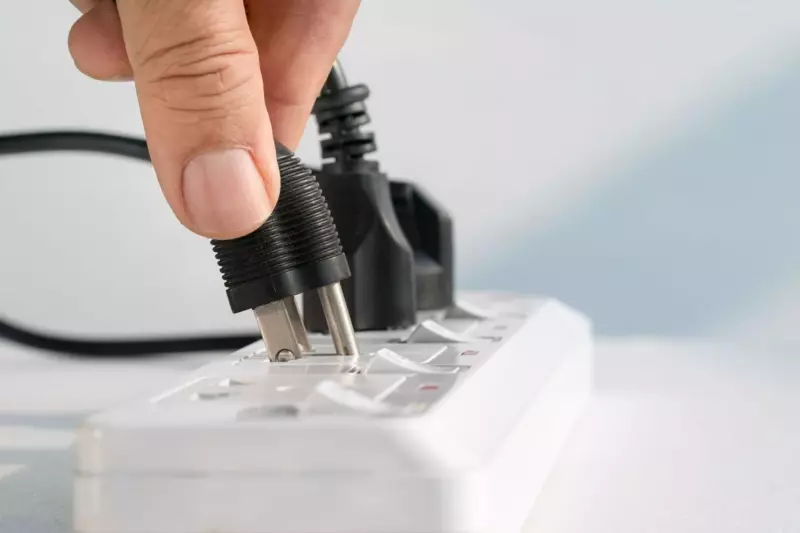
Once everything is connected, turn on your sump pump and run for 45 minutes to 1 hour.
The water-vinegar mix will work through the heating unit and remove any mineral buildup, such as lime scale buildup, from the tankless system.
✔️ Flush Your System with Clean Water
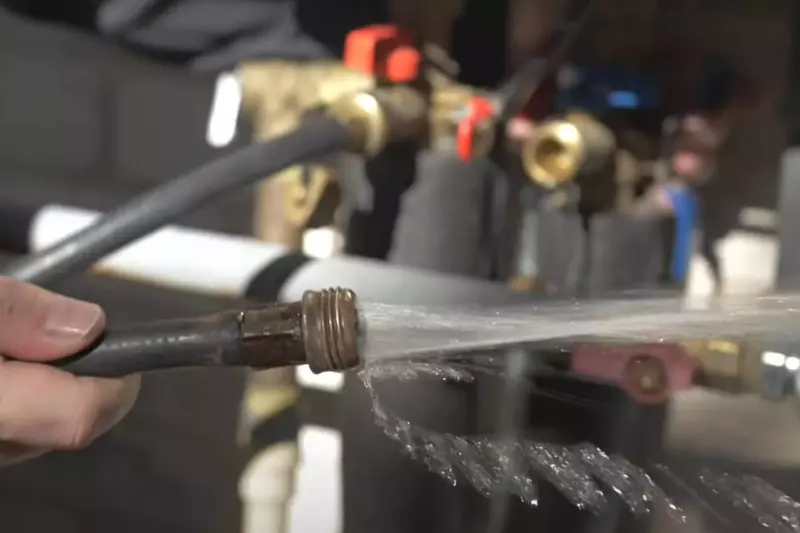
After one hour, switch off your pump, remove the vinegar mix, replace it with fresh water, and run for five minutes.
✔️ Reconnect Everything

Once you are happy, work your way through the process in reverse.
Shut off the pump, remove your hoses, and reconnect the original inlet and outlet hoses.
✔️ Fire Up Your Hot Water Heater
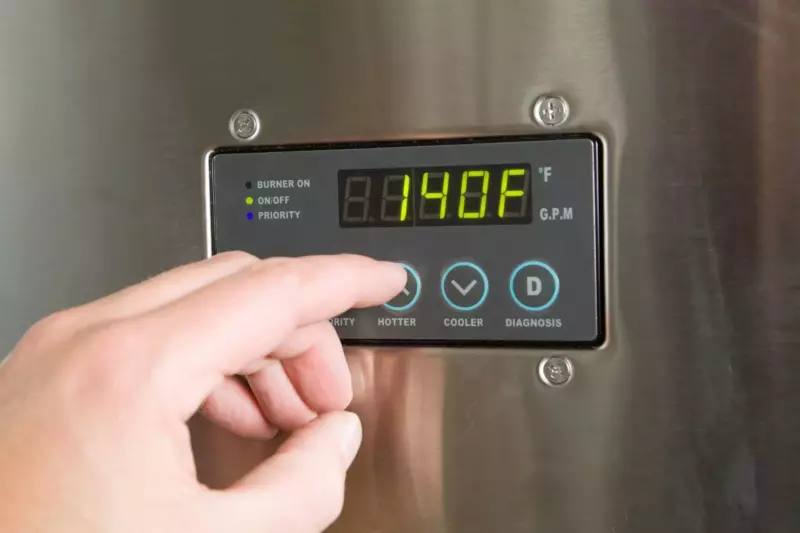
Ensure you refer to the original manufacturer’s instruction manual for the correct startup procedure.
This means turning on the cold water feed, restarting the pilot light, or turning on the power.
Tools:
- A submersible water pump, (also known as a sump pump). ¼ Horsepower or below will suffice. Anything more significant can damage your water system
- 1 x five-gallon bucket. (This is 18.9 liters which isn’t a bucket size, so let’s just go with 20 liters)
- 2 x sections of garden hose with the appropriate fittings. ( you can find all of this in your local hardware store. Be sure to check out the thread sizes first).
- Or you could just purchase a tankless water heater flush kit! See our reccommendation below.
Materials: 3 gallons of white distilled vinegar. (11.5 liters for our metric friends). You can buy a descaling solution but we find undiluted white vinegar works just as well.
✅ PRO TIP: Before powering up your tankless water heater, complete all the other maintenance tasks while the water, gas, or power is off.
⭐ Our Tankless Water Heater Flushing Kit for 2024.
Tankless Water Heater Flushing Kit with Flow-Aide
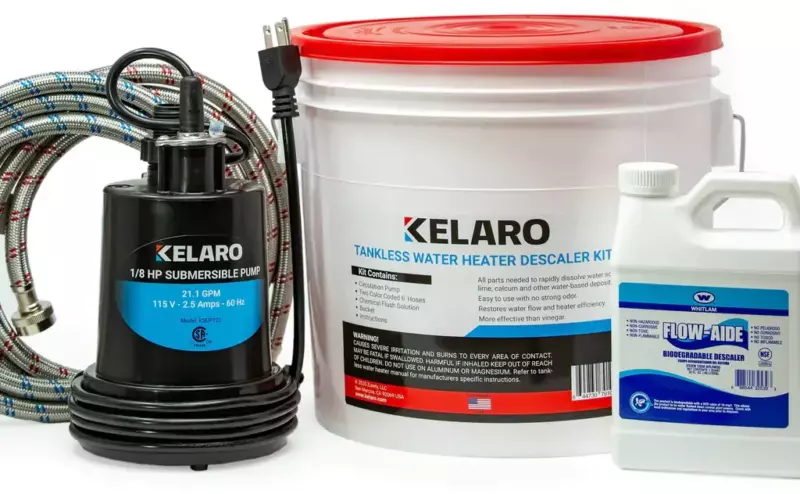
⭐ Prefer to Watch a Video?
⭐ Summary
Hopefully, we have clearly explained the tankless water heater maintenance process to motivate you to carry out these simple money-saving tasks.
Want to learn more about your home’s plumbing system? Feel free to check out our other plumbing articles!
Related Reading:

